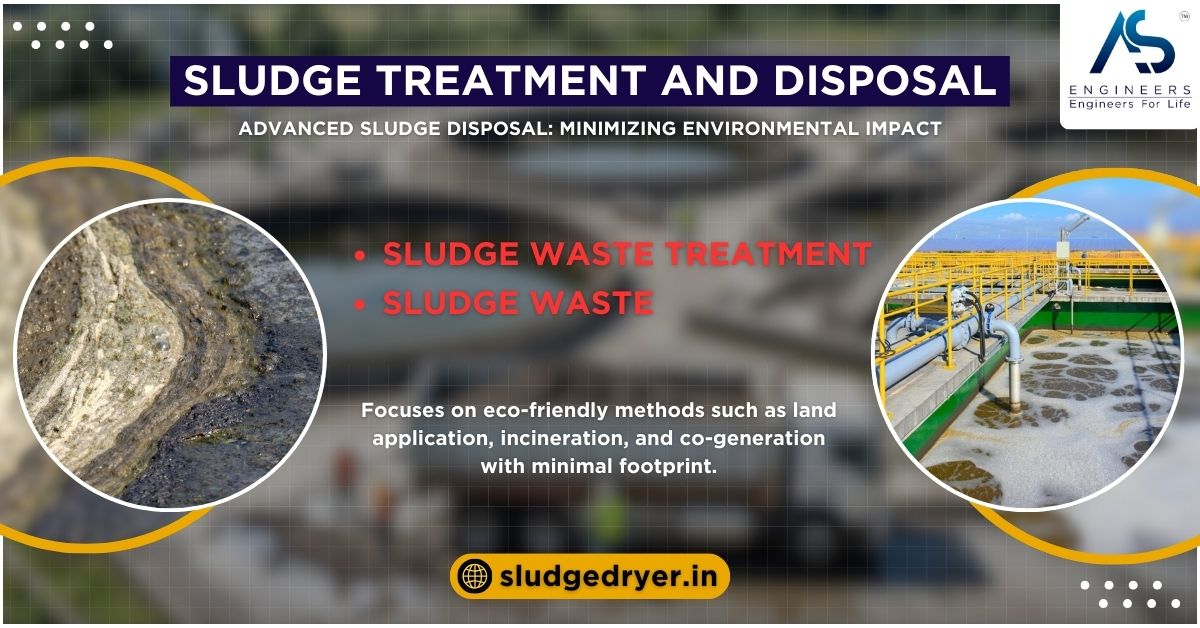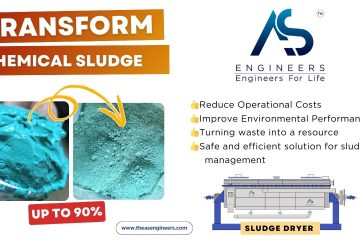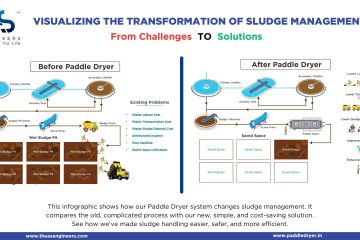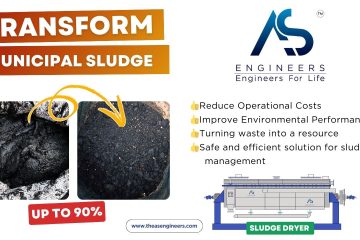Have you ever wondered what happens to the massive amounts of sludge produced every year by industrial plants and municipal wastewater facilities? According to environmental agencies worldwide, billions of tons of sludge accumulate annually, creating an urgent environmental challenge. Effective sludge treatment and disposal can transform this waste stream from a potential hazard into a resource or, at the very least, minimize its ecological footprint.
In this comprehensive guide, you will learn about modern, eco-friendly approaches to handling sludge waste, from land application to incineration and innovative cogeneration methods. By the end, you will know how to reduce environmental harm, comply with regulations, and potentially even unlock additional revenue streams from what was once an operational burden.
Table of contents
- 1. Understanding Sludge Waste
- 2. Why Sludge Treatment and Disposal Matter
- 3. Core Stages in Sludge Waste Treatment
- 4. Eco-Friendly Methods to Minimize Environmental Impact
- 5. Real-World Best Practices and Success Stories
- 6. Common Challenges and Practical Solutions
- 7. Frequently Asked Questions (FAQ)
- 8. Myth-Busting Section
- Conclusion
1. Understanding Sludge Waste
Most facilities—whether municipal wastewater treatment plants or heavy industrial operations—eventually produce byproducts rich in solids. Often referred to as sludge waste, these semi-solid masses can range from nutrient-dense organic matter to hazardous chemicals and metals, depending on their source.
1.1 What Is Sludge?
At its most basic level, sludge is the residue from water and wastewater treatment processes. It typically forms when particles, dissolved substances, and biological organisms agglomerate or settle out of liquids. Because it can contain organics, nutrients, pathogens, and even toxic elements, the handling of sludge demands a rigorous and nuanced approach.
1.2 Types of Sludge
- Primary Sludge: Formed during initial sedimentation, often containing larger particles or debris.
- Secondary (Biological) Sludge: A product of microbial processes, especially in activated sludge systems.
- Chemical Sludge: Results from industrial processes that utilize coagulants or chemical precipitation methods, frequently rich in metals or other contaminants.
- Mixed Sludge: A combination of primary and secondary sludges, sometimes further treated for specific industrial contexts.
1.3 Composition Variability
It’s crucial to understand that sludge waste characteristics differ drastically by origin:
- Municipal Sludge: Often has a high fraction of organic matter, pathogens, and nutrients like nitrogen and phosphorus.
- Industrial Sludge: May contain heavy metals, chemical residues, oils, or other hazardous substances.
This wide variability explains why sludge treatment and disposal strategies must be carefully tailored to the specific sludge profile.
2. Why Sludge Treatment and Disposal Matter
Sludge can be a liability if left unmanaged. However, adopting the right sludge treatment and disposal techniques can transform this liability into a cost-neutral or even profitable venture. Below are some of the key reasons why treating and disposing of sludge responsibly is essential.
2.1 Public Health and Environmental Protection
Untreated sludge can harbor pathogens, parasites, and viruses, posing a direct health risk to communities. If improperly handled, contaminants may enter waterways or leach into soil. Responsible management not only avoids legal repercussions but also protects drinking water supplies and public safety.
2.2 Regulatory Compliance
Agencies around the globe enforce strict guidelines for sludge waste treatment, including permissible disposal routes and contaminant thresholds. Failure to comply can lead to steep fines, legal action, and reputational harm. Regulations often evolve, so staying updated is critical to long-term compliance.
2.3 Resource Recovery Potential
Some sludge contains valuable elements—nutrients like nitrogen and phosphorus or even specific metals. Advanced processes can extract or convert these components for reuse in agriculture, manufacturing, or energy production. By leveraging these opportunities, facilities can offset operational costs and reduce their overall environmental impact.
2.4 Operational Efficiency and Cost Savings
By applying effective sludge waste minimization strategies, like better pre-treatment or advanced thickening, organizations can significantly cut hauling, energy, and disposal fees. Efficiently treating sludge also prevents bottlenecks in wastewater systems, ensuring smooth plant operations.
2.5 Corporate Responsibility and Reputation
Society and consumers increasingly value sustainability. Demonstrating robust sludge handling practices can enhance a company’s image, satisfy corporate social responsibility targets, and potentially attract investment focused on green initiatives.
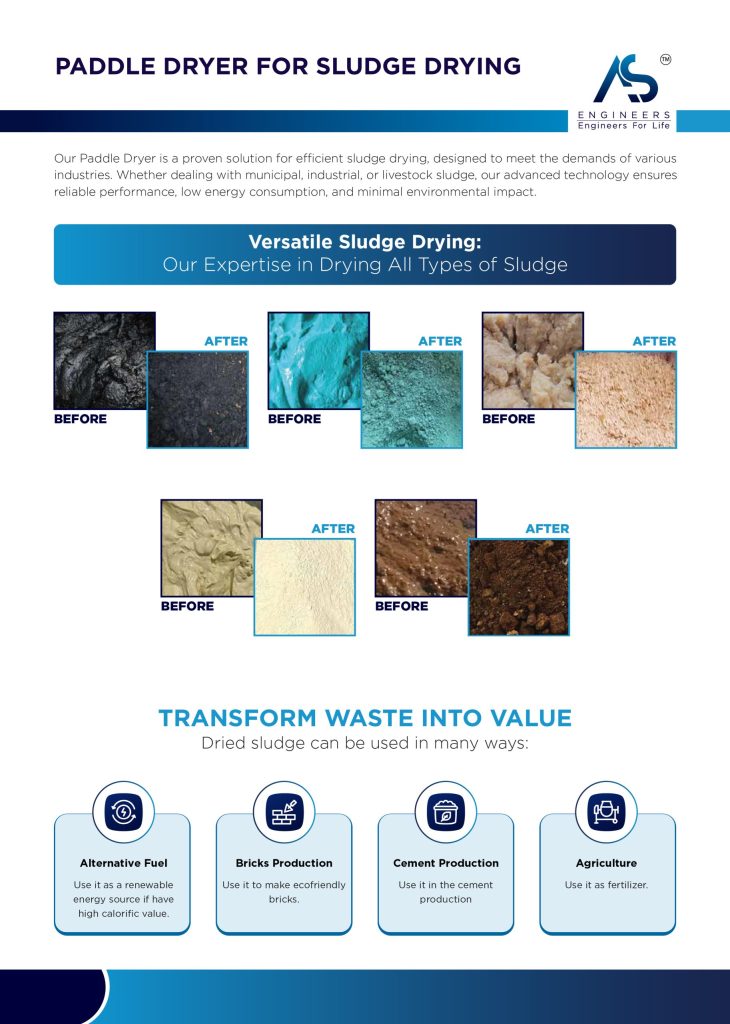
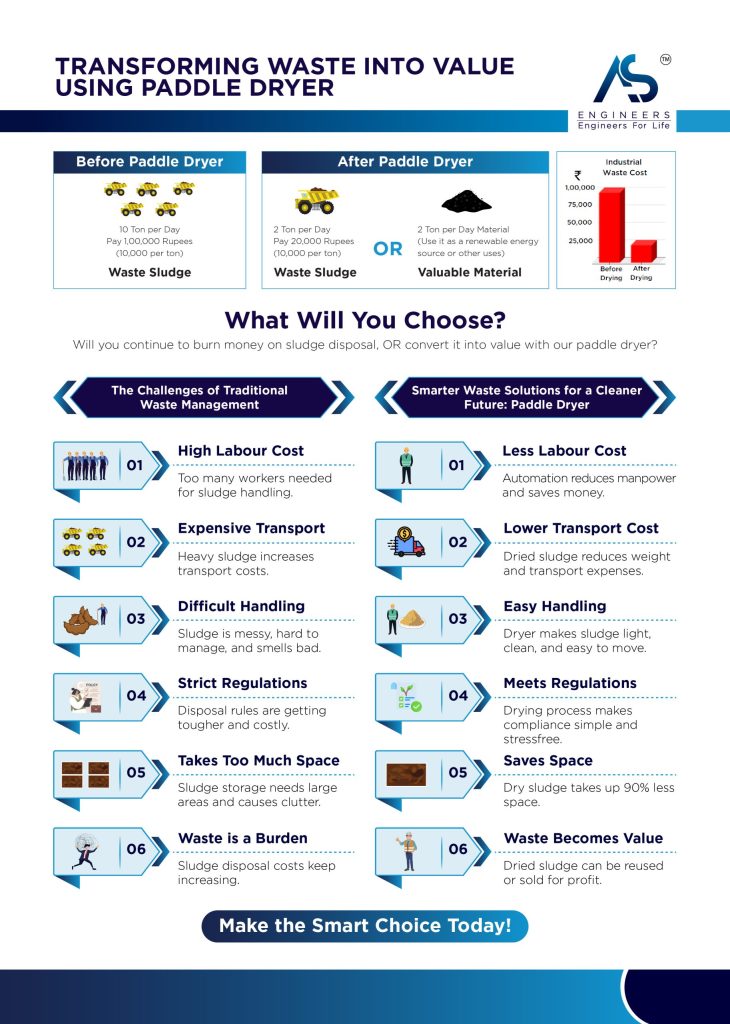
3. Core Stages in Sludge Waste Treatment
There is no one-size-fits-all approach to managing sludge. Instead, a multi-stage process ensures the best outcomes in terms of volume reduction, pathogen control, odor prevention, and cost efficiency.
3.1 Pre-Treatment
Pre-treatment usually involves screening, grit removal, and chemical conditioning:
- Screening and Grit Removal: Remove large solids or inorganic debris to protect downstream equipment from abrasion and blockages.
- pH Adjustment and Chemical Addition: Achieve the optimal pH for subsequent biological or chemical processes. Coagulants or flocculants may be introduced to enhance particle agglomeration.
3.2 Thickening
Thickening concentrates sludge by removing excess water:
- Gravity Thickeners: Relies on sedimentation, cost-effective but occupies a large footprint.
- Dissolved Air Flotation (DAF): Air bubbles attach to solids, floating them to the surface for removal.
- Centrifuges or Belt Thickeners: Offers faster performance in compact spaces, though often higher in energy consumption.
Effective thickening not only cuts transportation and disposal costs but also sets the stage for more advanced treatments.
3.3 Stabilization
Stabilization techniques aim to reduce pathogens, odors, and the likelihood of sludge decomposition after disposal:
- Aerobic Digestion: Uses oxygen-fed microbes to break down organic content; relatively easy but can be energy-intensive.
- Anaerobic Digestion: Creates biogas from sludge under oxygen-free conditions, potentially generating electricity or heat.
- Chemical Stabilization: Lime or other alkaline additives raise pH to halt microbial activity. Quick to deploy but can increase sludge volume.
- Thermal Stabilization: Heat-based processes, like pasteurization or thermal hydrolysis, destroy pathogens and improve dewaterability.
3.4 Dewatering
Dewatering transforms liquid sludge into a thicker, cake-like substance:
- Belt Filter Presses: Squeezes water out between porous belts.
- Plate and Frame Presses: Applies pressure between plates to extract moisture.
- Screw Presses: Gradually compresses sludge using a screw mechanism.
- Centrifuges (High-Speed): Forces solids outward at high rotational speeds.
Well-dewatered sludge reduces haulage expenses and can facilitate advanced disposal methods such as incineration or land application.
3.5 Advanced Processes
For sludge containing hazardous compounds, advanced steps like pyrolysis, gasification, or chemical extraction might be required. These can recover energy, isolate valuable elements, or minimize environmental harm before final disposal.
4. Eco-Friendly Methods to Minimize Environmental Impact
As environmental concerns deepen, both regulators and industries are seeking greener approaches to sludge treatment and disposal. Below are some widely recognized, eco-friendly options.
4.1 Land Application and Beneficial Reuse
When sludge meets specific safety criteria—especially regarding metal content and pathogen levels—land application can be a sustainable solution. Stabilized biosolids can enrich soil fertility and reduce reliance on chemical fertilizers.
Pros:
- Closes nutrient loops, returning nitrogen and phosphorus to the soil.
- Lowers synthetic fertilizer consumption.
- Safe for agriculture if properly regulated.
Cons:
- Strict oversight required to prevent groundwater contamination.
- Public opposition in some regions, citing odor or health concerns.
- Limited to sludge with acceptable contamination levels.
4.2 Thermal Treatments and Incineration
Thermal treatments can drastically reduce sludge volume and neutralize pathogens. Incineration at high temperatures (often above 850°C) combusts organic materials, leaving ash that can be landfilled or used in certain manufacturing processes.
Key Variants:
- Fluidized Bed Incinerators: Ensure uniform heat distribution for complete combustion.
- Multiple Hearth Furnaces: An older design still in use; good for sludge with consistent composition.
- Co-Firing: Combines sludge with other fuels like coal or biomass, optimizing energy recovery.
Pros:
- Reduces sludge volume up to 90%.
- Destroys many toxic organic compounds.
- Offers potential energy generation if heat recovery systems are included.
Cons:
- High capital and operating costs.
- Stringent emission controls required to meet air quality standards.
- Remaining ash might contain concentrated metals or other contaminants, requiring specialized disposal.
4.3 Co-Generation and Energy Recovery
In facilities with anaerobic digesters, the methane-rich biogas produced can fuel combined heat and power (CHP) systems. This setup not only meets the plant’s energy needs but can also generate surplus electricity for the grid. Some advanced plants even upgrade biogas to biomethane, suitable for direct injection into natural gas pipelines.
Benefits:
- Offsets or eliminates reliance on external power sources.
- Reduces carbon footprint by capturing methane that would otherwise escape into the atmosphere.
- Potential to sell renewable energy credits or carbon offsets.
4.4 Co-Processing and Industrial Symbiosis
Some cement kilns or power plants accept sludge as an alternative fuel. The organic fraction boosts calorific value, while high temperatures ensure thorough incineration. Sludge can also serve as a secondary raw material in industrial processes, creating a synergy between different industrial sectors.
Advantages:
- Reduces the need for virgin fuels like coal or petroleum coke.
- Integrates seamlessly into existing high-temperature operations.
- Potential for near-zero waste if residual ash merges into final products (e.g., clinker).
Drawbacks:
- Requires sludge with consistent moisture and calorific values.
- May demand pre-processing, like drying or pelletizing.
- Not all industries are equipped or willing to handle external waste streams.
5. Real-World Best Practices and Success Stories
While advanced treatments and greener methods are abundant, real-world examples underscore how these solutions work in practice.
5.1 Municipal WWTP Upgrades for Land Application
A mid-sized city in Europe upgraded its wastewater treatment plant to include thermal hydrolysis. After anaerobic digestion, the resulting biosolids met rigorous Class A standards, suitable for unrestricted land application. Local farmers welcomed the biosolids as a cost-effective, high-nutrient fertilizer, and the city saved millions in landfill and incineration fees over five years.
5.2 Industrial Plant’s Co-Generation Model
A chemical manufacturing facility in North America adopted anaerobic digesters for their organic-rich sludge. Methane from digestion fueled CHP units, generating enough electricity to power 40% of the plant’s operations. Waste heat supported process heating needs, drastically lowering the facility’s carbon footprint.
5.3 Co-Processing in Cement Kilns
In Asia, a major cement company partnered with nearby textiles and paper mills to accept partially dried sludge. By carefully controlling moisture and calorific value, they reduced coal use by 15%. This synergy diverted large volumes of sludge from landfills and diminished the cement plant’s reliance on fossil fuels.
5.4 Biosolids Composting in Agriculture
A pulp and paper mill in South America discovered that mixing their fibrous sludge with sawdust from local lumber operations produced high-quality compost. Nearby farmers purchased the compost at a discount, enhancing soil structure and fertility. The mill avoided landfill fees, and the region benefited from more sustainable agricultural practices.
These success stories emphasize a collaborative approach, whether partnering with local farmers, forging alliances with neighboring industries, or securing funding for advanced treatment infrastructure.
6. Common Challenges and Practical Solutions
Even the most well-intentioned sludge treatment and disposal program can face hurdles. Proactively addressing these issues can ensure smoother operations and sustained compliance.
6.1 High Moisture Content
Challenge: Transporting water-laden sludge is expensive, and incineration becomes less efficient with excessive moisture.
Solution: Invest in effective thickening and dewatering technologies. Pre-drying sludge, sometimes via recovered heat, can significantly boost combustion efficiency or reduce hauling costs.
6.2 Public Resistance
Challenge: Proposed land application or incineration projects may face local opposition due to odor, perceived health risks, or increased truck traffic.
Solution: Launch transparent communication campaigns that show monitoring data, highlight environmental benefits, and discuss robust control measures (e.g., odor mitigation, advanced emissions filters).
6.3 Regulatory Complexity
Challenge: Sludge classification (hazardous vs. non-hazardous) and disposal guidelines can vary widely across regions.
Solution: Engage with local authorities early in the planning process. Employ compliance specialists or consultants who track regulatory updates. Adapt or refine processes to meet new rules without delay.
6.4 High Capital and Operating Costs
Challenge: Thermal treatments, anaerobic digesters, and advanced technologies require significant upfront investments.
Solution: Look for government grants, carbon credits, or shared infrastructure opportunities. Conduct robust cost-benefit analyses, highlighting energy savings, reduced disposal fees, or potential revenue from recovered materials.
6.5 Changing Sludge Composition
Challenge: Industrial processes aren’t static; feedstocks and production lines might shift, altering sludge chemistry.
Solution: Implement real-time monitoring systems. Maintain flexible treatment lines that can adjust chemical dosing, retention times, or operational setpoints to accommodate variability.
7. Frequently Asked Questions (FAQ)
Q1: What’s the difference between sludge treatment and disposal vs. sludge waste treatment?
“Sludge treatment and disposal” emphasizes the entire journey—thickening, stabilization, and ultimately disposing of or reusing sludge. “Sludge waste treatment” often focuses on the processing steps used to reduce or neutralize the harmful aspects of sludge, but both terms are closely intertwined and may be used interchangeably in many contexts.
Q2: Can all types of sludge be land-applied?
No. Only sludge meeting specific thresholds for metals, pathogens, and other contaminants can be land-applied. Regulatory agencies outline strict criteria to ensure public health and environmental protection.
Q3: How can sludge produce energy?
Anaerobic digestion breaks down organic matter in sludge to generate biogas, predominantly methane and carbon dioxide. Facilities capture this gas to fuel generators or boilers, offsetting fossil fuel consumption.
Q4: Is incineration environmentally sustainable?
Incineration drastically reduces volume and neutralizes pathogens, but it must be coupled with advanced air pollution controls. When done responsibly—potentially with energy recovery—it can be an acceptable option. However, it’s energy-intensive and requires rigorous emission monitoring.
Q5: Are there financial incentives for eco-friendly sludge disposal methods?
Yes. Many jurisdictions offer grants, tax credits, or carbon offset programs for adopting cleaner technologies. Projects that recover energy or improve resource efficiency may also qualify for green bonds or sustainability-linked loans.
8. Myth-Busting Section
Myth 1: “All Sludge Is Hazardous”
Reality: While some industrial sludge may contain heavy metals or toxins, not all sludge is hazardous. Municipal and biological sludges are often safe for beneficial reuse if properly treated and tested.
Myth 2: “Incineration Destroys Everything Completely”
Reality: Although incineration occurs at high temperatures, some metals and inorganic materials remain in the ash. Proper ash handling and disposal are necessary to prevent secondary pollution.
Myth 3: “Land Application Always Leads to Pollution”
Reality: Land application under strict regulatory oversight can be a safe, sustainable method. Soil testing, application limits, and proper treatment measures ensure that contaminants do not accumulate to harmful levels.
Myth 4: “Eco-Friendly Sludge Treatment Is Too Expensive”
Reality: While advanced technologies can cost more upfront, the long-term savings in disposal fees, regulatory compliance, and potential energy or product sales often outweigh the initial investment.
Myth 5: “Once You Choose a Method, You Can’t Switch”
Reality: Many treatment lines are adaptable. Facilities often start with basic dewatering and stabilization, then evolve to adopt new processes or technologies as budgets, regulations, or production needs change.
Conclusion
Navigating sludge treatment and disposal challenges doesn’t have to be a costly or environmentally risky ordeal. With the right blend of thickening, stabilization, dewatering, and advanced methods like energy recovery or co-processing, you can turn what was once an unwanted byproduct into a valuable resource—or at least minimize its ecological footprint. These strategies not only help you comply with evolving regulations but also contribute to a more sustainable operation. By prioritizing efficient sludge waste treatment, you protect public health, safeguard local ecosystems, and potentially reduce operational costs. Share your thoughts below, subscribe for more insights, and check out related guides to deepen your understanding of next-generation sludge solutions.

